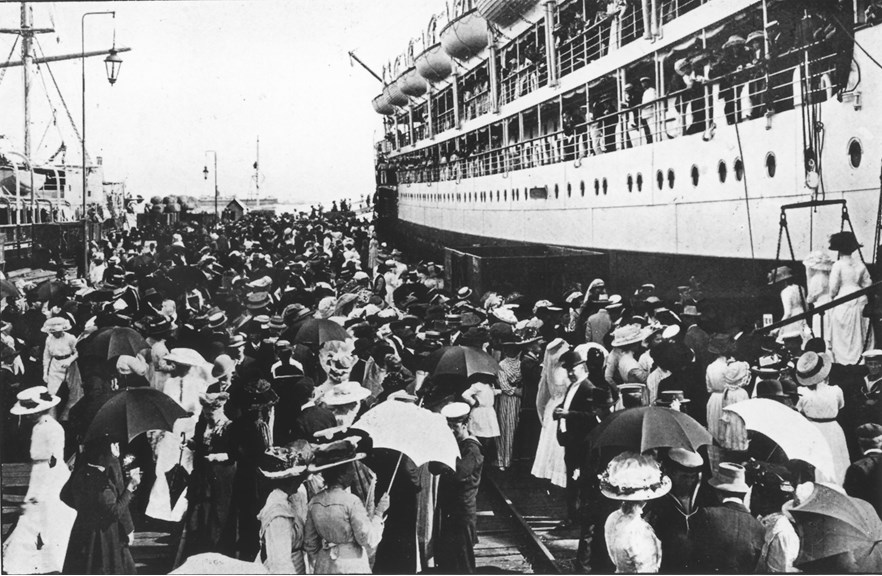Welcome to my first post. I’ve had two railway, social and travel history themed books published in the past fourteen months which has been a complete whirlwind. Researching and writing a book takes a considerable amount of time and energy. Athletes talk about having to train and put in the hard yards, and so in a manner of speaking, it’s much the same with book writing representing a significant commitment and effort (once you’ve signed the contract) before it finally manifests itself in the finished printed product.
I’m lucky enough to have enjoyed a career in marketing and communication, and particularly in more recent times, in travel and tourism both from a practitioner’s perspective and that of academia. I’ve always been fascinated by the many social dimensions involved in defining customers and particularly surrounding the softer examination of why people buy and what motivates them to purchase, and all quietly unearthed through the norms of qualitative research.
This element of probing was never far away. When you’re looking at book ideas you always need to come up with different angles and so for me melding the social breadth of railway and maritime travel was the gap for me. As a kid I was always enthralled by the journey experience of day trips, going on holiday and the places we went, normally in the comfort of a Ford car over the years, but secretly I pined for travel by richly illustrated Pullman trains and the Cunard Queens. History and geography always being my favourite subjects at school.
The US book launch – America Discovers Europe

I can’t quite believe it, but this blog coincides with the US launch of Boat Trains. In speaking to American and Canadian friends, I’ve been heartened by the enthusiastic response of so many to the story of travel from the New to the Old World (and vice versa) when steam-based technologies ruled supreme. What began as a visitor trickle following the end of the Civil War was a torrent just thirty years later as shipping lines, railway companies, hoteliers, department stores and shopping malls abutted to provide the most lavish and convivial of shopping and travel facilities. Luxury travel on land by rail and at sea demanded the same types of places and services as found in the most sumptuous of hotels. This they most clearly got as the terms Ocean Palaces, Palaces on Wheels and Doing Europe slipped surreptitiously into the English lexicon.
We really got going in the Edwardian era as it marked rapid Grand Hotel expansion – many owned by railway companies. Some 80,000 Americans were estimated to be either living or on extended visits to London, Paris and Berlin. American writer Blanche McManus captured the spirit of the age as the quest for indulgence appealed to an English demand for comfort, but also to the American who demanded luxury. In her book The American Woman Abroad (Dodd, Mead and Company, 1911) Blanche writes strikingly on how new London and Paris hotels much appealed to her fellow countrymen:
‘The lavishly convenient American way of living has had much to do with the change that has come over the European caterer to the foreigner. Now that he has learned the trick and is working on his own account, adapting it to his needs, even though the pace be slow, it is still evident that it has come as a result of a first desire to please an American clientele. The patriotic Frenchman dramatically points to the big hotels which have gone up in Paris during the last few years, and exclaims, “It is for you Americans that these luxurious establishments have been built; it is you who are coming here in our midst and demoralising our own people with your dollars.”’
London’s Grand Hotels, Palace Hotels in Paris, as well as department store fortresses in the two capitals were like magnets to wealthy overseas travellers. An early form of retail or shopping culture was pervasive as special malls and arcades of individual shops appeared in prosperous districts, but it was to the multifaceted department store that most visitors turned to. In 1907, Harrods arranged to price everything in their windows both in sterling and in dollars in view of the large influx of US visitors expected for the summer season.
So, it’s not just merely an exploration of nostalgic forms of transport and the progress of luxury travel norms but examining a process that shaped the modern tourism and hospitality sectors we now take for granted. Major cities, places of interest, magnificent natural landscapes and who travellers met became the subjects of one upmanship amongst Stateside’s chattering classes. Undoubtedly, travel histories of how we got there and why we went are one of the fast-developing areas of destination storytelling today.
